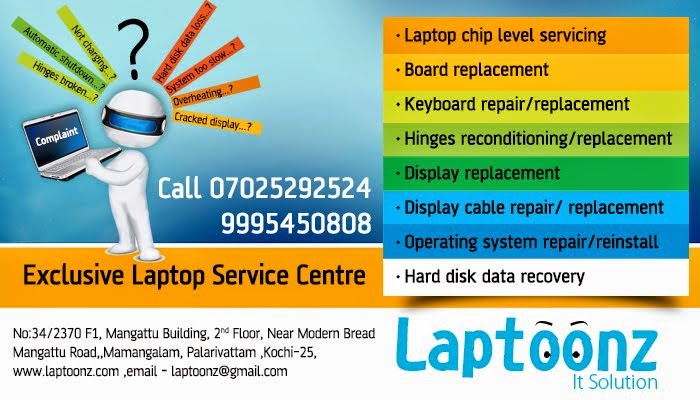Hard Disk Operational Overview
As an illustration, I'll describe here in words how the various components in the disk interoperate
when they receive a request for data. Hopefully this will provide some context for the descriptions
of the components that follow in later sections.www.laptoonz.com
A hard disk uses round, flat disks called platters, coated on both sides with a special media material
designed to store information in the form of magnetic patterns. The platters are mounted by cutting
a hole in the center and stacking them onto a spindle. The platters rotate at high speed, driven by a
special spindle motor connected to the spindle. Special electromagnetic read/write devices called
heads are mounted onto sliders and used to either record information onto the disk or read
information from it. The sliders are mounted onto arms, all of which are mechanically connected
into a single assembly and positioned over the surface of the disk by a device called an actuator. A
logic board controls the activity of the other components and communicates with the rest of the PC.
Each surface of each platter on the disk can hold tens of billions of individual bits of data. These are
organized into larger "chunks" for convenience, and to allow for easier and faster access to
information. Each platter has two heads, one on the top of the platter and one on the bottom, so a
hard disk with three platters (normally) has six surfaces and six total heads. Each platter has its
information recorded in concentric circles called tracks. Each track is further broken down into
smaller pieces called sectors, each of which holds 512 bytes of information.www.laptoonz.com
The entire hard disk must be manufactured to a high degree of precision due to the extreme
miniaturization of the components, and the importance of the hard disk's role in the PC. The main
part of the disk is isolated from outside air to ensure that no contaminants get onto the platters,
which could cause damage to the read/write heads.
Here's an example case showing in brief what happens in the disk each time a piece of information
needs to be read from it. This is a highly simplified example because it ignores factors such as disk
caching, error correction, and many of the other special techniques that systems use today to
increase performance and reliability. For example, sectors are not read individually on most PCs;
they are grouped together into continuous chunks called clusters. A typical job, such as loading a
file into a spreadsheet program, can involve thousands or even millions of individual disk accesses,
and loading a 20 MB file 512 bytes at a time would be rather inefficient: www.laptoonz.com
As an illustration, I'll describe here in words how the various components in the disk interoperate
when they receive a request for data. Hopefully this will provide some context for the descriptions
of the components that follow in later sections.www.laptoonz.com
A hard disk uses round, flat disks called platters, coated on both sides with a special media material
designed to store information in the form of magnetic patterns. The platters are mounted by cutting
a hole in the center and stacking them onto a spindle. The platters rotate at high speed, driven by a
special spindle motor connected to the spindle. Special electromagnetic read/write devices called
heads are mounted onto sliders and used to either record information onto the disk or read
information from it. The sliders are mounted onto arms, all of which are mechanically connected
into a single assembly and positioned over the surface of the disk by a device called an actuator. A
logic board controls the activity of the other components and communicates with the rest of the PC.
Each surface of each platter on the disk can hold tens of billions of individual bits of data. These are
organized into larger "chunks" for convenience, and to allow for easier and faster access to
information. Each platter has two heads, one on the top of the platter and one on the bottom, so a
hard disk with three platters (normally) has six surfaces and six total heads. Each platter has its
information recorded in concentric circles called tracks. Each track is further broken down into
smaller pieces called sectors, each of which holds 512 bytes of information.www.laptoonz.com
The entire hard disk must be manufactured to a high degree of precision due to the extreme
miniaturization of the components, and the importance of the hard disk's role in the PC. The main
part of the disk is isolated from outside air to ensure that no contaminants get onto the platters,
which could cause damage to the read/write heads.
Here's an example case showing in brief what happens in the disk each time a piece of information
needs to be read from it. This is a highly simplified example because it ignores factors such as disk
caching, error correction, and many of the other special techniques that systems use today to
increase performance and reliability. For example, sectors are not read individually on most PCs;
they are grouped together into continuous chunks called clusters. A typical job, such as loading a
file into a spreadsheet program, can involve thousands or even millions of individual disk accesses,
and loading a 20 MB file 512 bytes at a time would be rather inefficient: www.laptoonz.com

